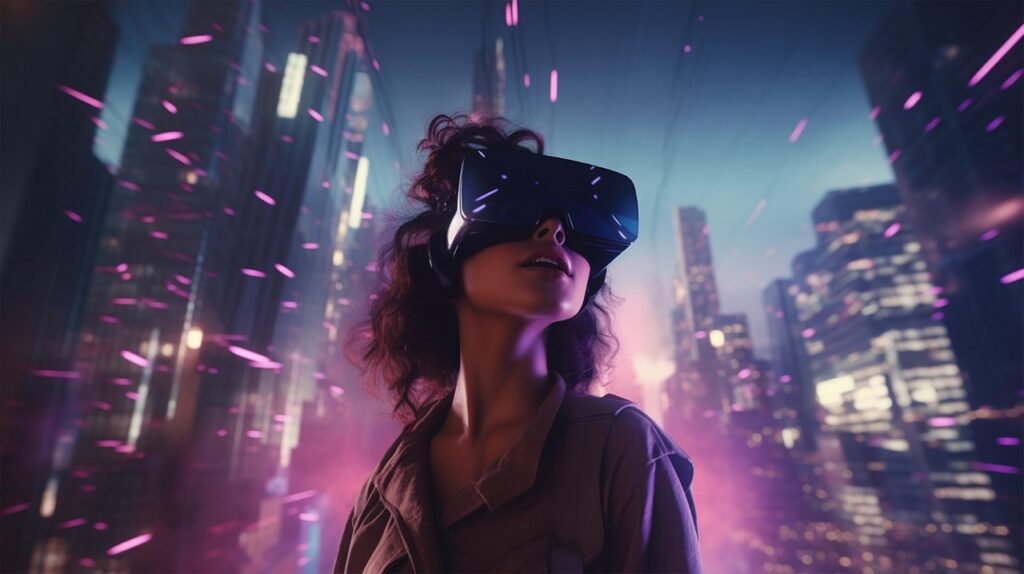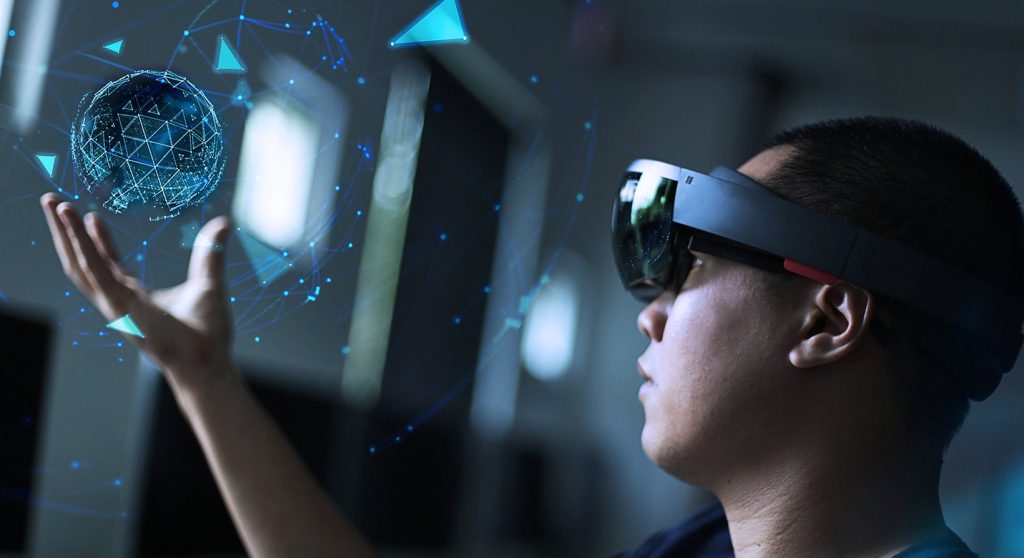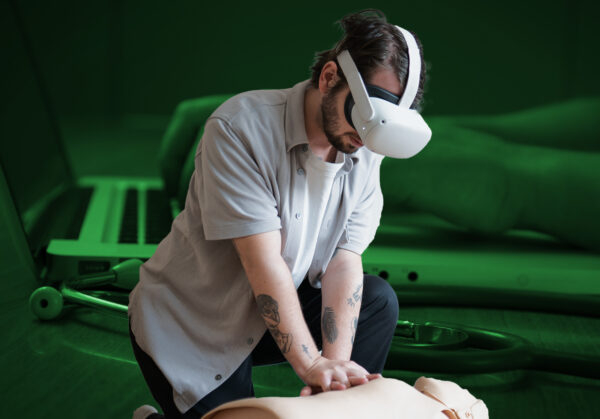In 2023, the world of immersive technology is set to take off in exciting new ways. From virtual reality to augmented reality and beyond, there are a host of trends that are shaping the future of this rapidly-evolving field. We will explore some of the most exciting developments in the world of immersive technology. As we move deeper into the 21st century, these trends are poised to change the way we interact with technology, and with the world around us. So join us as we take a glimpse into the future of immersive technology and explore the trends that are shaping the next generation of digital experiences.
32%
13%
74%
44.9%
FURTHER RETAILERS ARE PLANNING TO IMPLEMENT AR
EXPECTED GROWTH OF THE METAVERSE EACH YEAR
OF ADULTS CONSIDER JOINING THE METAVERSE IN FOLLOWING YEAR
INCREASE OF ANNUAL WEB3 EXPANSION RATE BETWEEN 2022-2023
1. The rise of AR
Augmented reality, the technology that is a cheaper and more practical version of virtual reality, is likely to be even more popular in 2023. Apple, currently the wealthiest tech company in the world, might be finally releasing the long-awaited AR glasses
In an interview, Apple’s chief executive Tim Cook said that AR is “a profound technology that will affect everything,” Snap founder and chief executive Evan Spiegel also recently said that the technology is “more immersive” than VR.
Some of the specific AR predictions:
– AR to be worth $60 billion by 2023
– 1.4 billion mobile AR users worldwide
– Retailers and marketers use AR to gain new customers
– AR live-stream shopping will take off
– NFTs will not be limited to artwork and face filters, they will include AR features
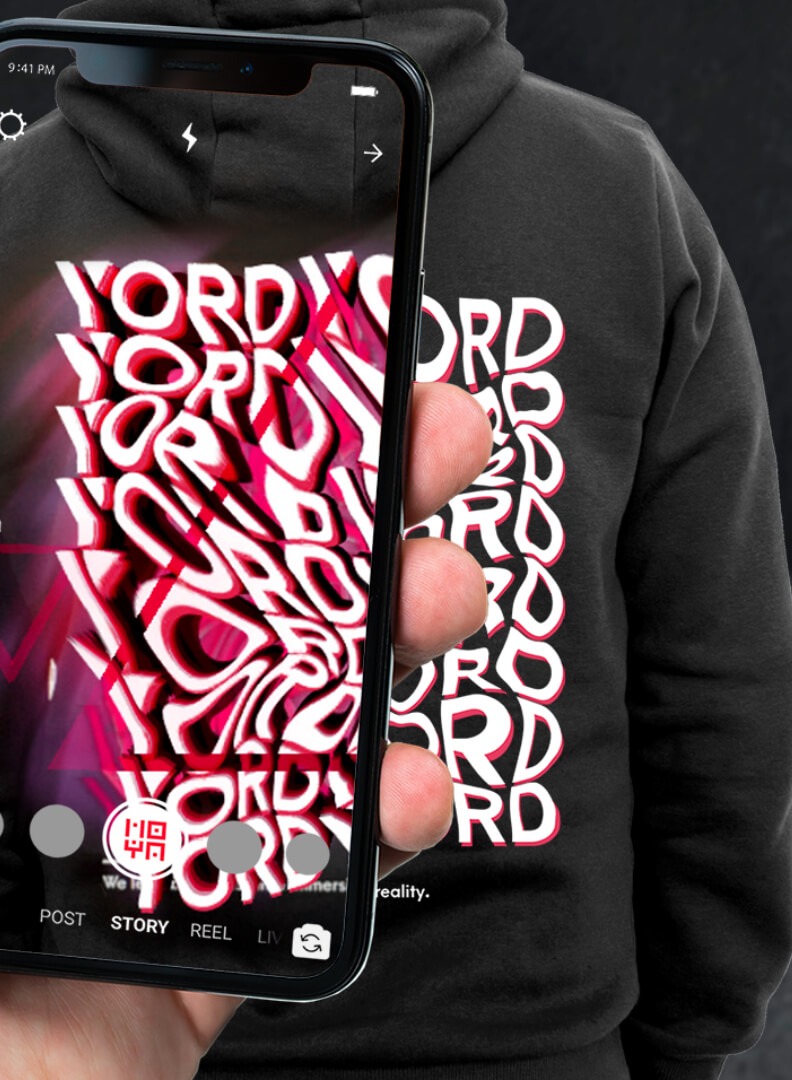
Why Marketers should use AR in their strategies in 2023?
In 2023, augmented reality (AR) marketing strategies will continue to offer numerous benefits for both clients and companies. As markets become more consumer-driven, businesses will continue to shift towards experiential marketing approaches in order to stand out in a crowded and competitive marketplace. By implementing AR media and marketing strategies, companies can differentiate themselves and attract new customers while also increasing customer loyalty. These innovative solutions can also improve a company’s positioning and financial performance.
Click here to learn more about AR solutions and see how we can help.

2. Metaverse as a marketing tool
Search engines and social media were the technological enablers of Web 1.0 and Web 2.0, providing for marketing and advertising. In Web 3 the capital tool for this will be – the Metaverse.
In case you aren’t familiar with the concept of Web 3 still:
- WEB 1.0 – the first version of the Internet, primarily a READ-ONLY experience
- WEB 2.0 – the version of the Internet that we’ve used over the last 10-15 years, mainly focused on INTERACTION and socialization over the web
- WEB 3.0 – is still primarily a concept, but it is starting to unveil, with decentralization as the main idea behind it, adds a layer of OWNERSHIP to Web 2.0
Does the metaverse have a bright future beyond marketing?
In 2023, augmented reality (AR) marketing strategies will continue to offer numerous benefits for both clients and companies. As markets become more consumer-driven, businesses will continue to shift towards experiential marketing approaches in order to stand out in a crowded and competitive marketplace. By implementing AR media and marketing strategies, companies can differentiate themselves and attract new customers while also increasing customer loyalty. These innovative solutions can also improve a company’s positioning and financial performance.
Want to learn more about how metaverse can benefit your business? Click here.
3. NFTs for building the audience
The three most famous letters in the Web 3 world, together with the Metaverse, create an innovation in the web 3 marketing world. An NFT is a unique digital identifier that cannot be copied, substituted, or subdivided, recorded in a blockchain, and used to certify authenticity and ownership.
NFT statistics:
– The NFT market is estimated at $44 million.
– The commercial value of OpenSea is estimated at around $90 million every month
– NFT’s weekly sales volume has gone from 100 sales in 2017 to 15,000 or even 50,000 in 2022
– NFTs have generated an expenditure of approximately $41 billion in cryptocurrency for the year 2021

Why NFTs should they be necessary for marketing?
NFTs could serve as a creative channel that helps brands and creators to expand their digital offerings and provide their potential and existing customers with more engaging ways to interact with the company. This could create a vibrant community that is aligned with the concept of community marketing. NFTs could be used for many things, from access to premium content, loyalty programs for NFT holders, and event tickets. They could give their fans access to exclusive perks such as special merchandise gifts, one-off releases, memberships, and even financial rewards for participation in certain events. For this reason, you can easily build a following of fans or collectors of your goods and services by providing them with digital assets which could be collected, traded, or sold. This level of interaction can turn clients into ardent supporters, which conventional marketing strategies have needed help achieving.
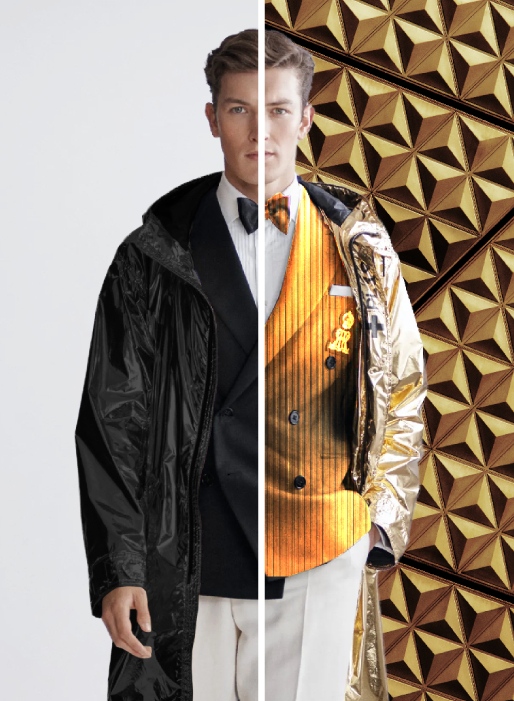
4. Advanced avatars and digital fashion
One of the key concepts behind the Metaverse is the idea of using avatars as our visual representations in this digital realm. These avatars would serve as our virtual personas, much like the characters in video games or the profiles we create on social media. The beauty of avatars in the Metaverse is that there are no boundaries to how creative they can be. Users have the ability to customize their avatars to their heart’s desire, giving them unique looks and special digital assets.
These digital assets can take on many forms, but digital fashion is one area that has garnered a lot of attention. With the ability to design and create digital clothing, accessories, and even jewelry, users can express their personal style in a whole new way. Additionally, the Metaverse can also provide a platform for independent designers to showcase their work and potentially reach a global audience.
Key Statistics:
– The global Digital Fashion market was valued at USD 119.52 million in 2021 and is expected to expand at a CAGR of 187.6% during the forecast period, reaching USD 67634.64 million by 2027.
– Dolce & Gabbana’s virtual collection Collezione Genesi, sold for 1,886 ETH, or around six million U.S. dollars.
– Gucci’s first NFT, a video inspired by its recent Aria collection, which auctioned for 25,000 U.S. dollars
– Following the virtual fashion events in 2021 due to the coronavirus (COVID-19) pandemic, the global fashion events of 2022 have now been bookended by a virtual fashion week in the Metaverse, organized in partnership with Decentraland.
How can Digital Fashion and Avatars be used in Marketing?
Digital fashion and avatars can be used in marketing in a number of ways. Brands can create virtual fashion items that can be worn by avatars in video games or VR experiences, allowing users to show off their support for the brand while also expressing their personal style. Brands can also use avatars and digital fashion in marketing campaigns, such as creating virtual fashion shows or allowing users to virtually try on clothing and accessories before making a purchase. Additionally, digital fashion and avatars can be used to create immersive brand experiences in virtual reality, allowing users to interact with the brand in a more interactive and personalized way.
5. Virtual events in the metaverse
Metaverse events are now an essential part of the new digital frontier. The events could be done in many different ways, such as concerts, fashion shows, work events, etc. The events could be for a bigger audience and a smaller group, such as meetings with employees, board meetings, lectures, or webinars.
For marketers, metaverse events could be an excellent tool for planning campaigns with remote colleagues or attending events hosted by other marketers in their field.
Metaverse events present a new era of networking in which you can connect with business partners from around the world without having to leave your home. You don’t have to worry about your physical appearance since you’re presented with your avatar, which could be customised however you wish.

Key Metaverse event statistics:
– 10.7 mil players saw Marshmello perform live in a Fortnite concert in 2019
– In 2020, Fortnite hosted a Travis Scott performance that attracted 45.8 million viewers across five shows, with 27.7 mil unique attendees.
– 60% of US gamers participate in non-gaming activities or events within video games
– 59% of companies plan to increase investment in Metaverse events-related technologies
– On Roblox, 33 mil people saw Lil Nas X’s show
What are the benefits of the virtual events in the metaverse?
– Accessibility: you can easily expand the scope of your brand without ever having to leave your home. Events connect you with your global audience in real time, and by recording these events, your party content could be accessed on demand.
– Engagement: This platform offers plenty of opportunities to create interesting content such as live polls, Q&As, and dashboards to keep engagement levels high throughout lengthy sessions.
– Cost-effectiveness: Metaverse events, much like any other events eliminate the need for all of the real-life event hosting costs. They are beneficial for the organizers, but they also save money for the attendees as well.
– Deeper personalization: Personalized content and events are popular with users since it attracts their attention and encourages them to stay for a longer time. Events could be done in a manner that allows visitors to tailor content topics to each visitor’s interests. This format ensures higher levels of engagement for each participant which helps ensure a high level of engagement for each attendee which ensures that everyone gets the most out of each party.
👋 get in touch
By clicking the “send” button, I agree to the collection and processing of my personal data as described in the Privacy Policy.


